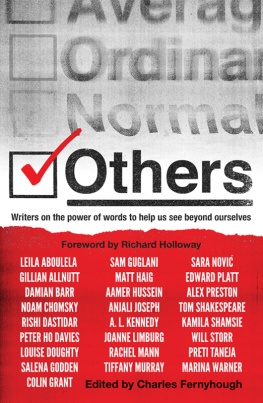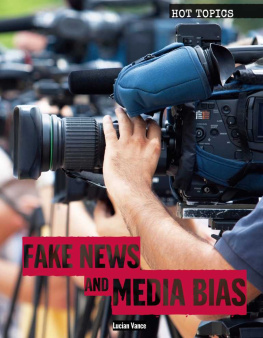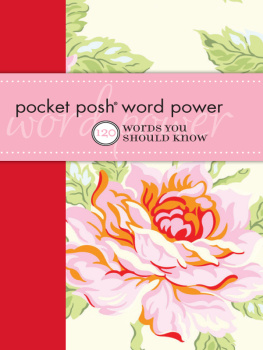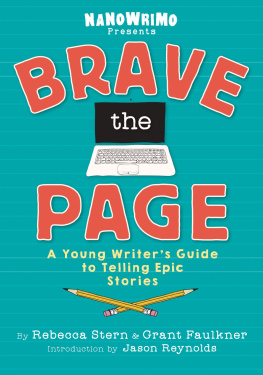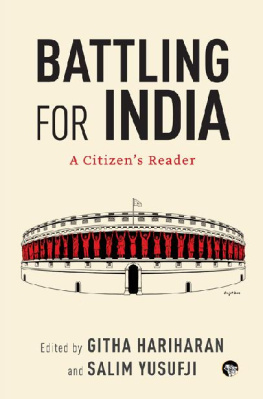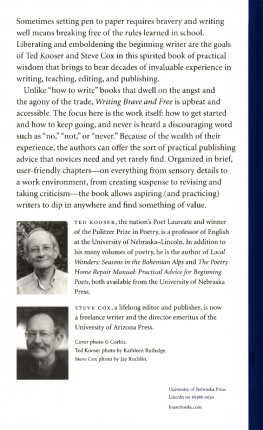Brave New Words

To all those who continue to write and make new, and to Conrad
Contents
Preface
WASAFIRI HAS BEEN an international fixture for over a third of a century. In this time much has changed in the world of imaginative writing. This collection of essays points to important developments in technology, and interrogates the very definition of what constitutes literaturein short, Brave New Words helps us to understand many of the challenges that literary practitioners face today. The anthology extends and deepens a partnership between Wasafiri and writers and readers, an ongoing dialogue which began in that most symbolic of years, 1984.
There are, of course, always more questions than answers. What can writers do about continued violations of the rights of citizens; the closing of national borders; perpetration of false, and often insidious, news and information? Are writers obliged to respond to these dilemmas or should they be free to pursue their art without feeling pressured to become quasi-reporters from the frontline of the sociocultural battlefield? What can writers do about the rise of a fundamental version of political correctness which attempts to impinge upon ones ability to imagine across so-called boundaries of race, class, nationality, sexuality and gender?
The essays in this collection address these questions and many more issues which affect the writer in the early twenty-first century. Publishing, for example, is an industry where writers are becoming increasingly diverse, but those who control publishing look much the same as they have always done; they are white and middle class. How, in an increasingly heterogeneous multi-racial and culturally complex world, is this affecting what kind of literature reaches us as readers?
The title of the anthology suggests an engagement with the future, as opposed to nostalgic tiptoeing through the evidence of previous years. This is perhaps the greatest strength of the volume; a belief that despite the difficulties of the past, and the confusion of the present, literature can still take the lead and guide us towards a time in which words delivered from all sections of society will carry equal weight and importance. Such a world would indeed be brave.
Caryl Phillips
23 June 2019
Introduction
The vitality of language lies in its ability to limn the actual, imagined and possible lives of its speakers, readers, writersIt arcs toward the place where meaning may lie.
Toni Morrison
The interior space of our imagination is a theatre that can never be closed down.
Salman Rushdie
LITERATURE IS A STOREHOUSE, a repository of words and stories which can travel across borders and across time. In March 2016, I was visiting Margate, a town on the Kent coast, when by chance I wandered into Turner Contemporary, an expansive gallery hugging the seafront. The Brexit referendum was still a few months off, but puffed-up promises of a new Britain, standing fearlessly alone and breaking free from its closest neighbours in Europe, were swirling. As I stepped into the quiet of the museum, I found myself in a huge room, brightly lined from ceiling to floor with batik-covered books, an installation by the leading British-Nigerian artist Yinka Shonibare that was named The British Library. As famous names jumped out from gold-embossed spinesSigmund Freud, Karl Marx, Joseph Conrad, Oscar Wilde, Ben Okri, Zadie SmithI began to realise that almost all were linked to migration and to Britain. Through the collection of stories lining the shelves, this long history was being placed centre-stage.
At first I was enthralled by the invented library due to my recognition of a history and community of migration narratives to which I felt I could belong. Not only was I familiar with some of the names of authors on the shelves but in some cases I knew the writers personally as well as their histories. Yet looking closely made me aware that the library represented more than one artists intimate vision, or any single pathway into history; it was also a performative public space, confronting viewers with multiple and sometimes competing narratives. Indeed, while the weight of over 6,000 names seemingly cemented a vision of a more hospitable Britain, it was clear that the exhibit was not simply offering a smooth, neatly conjured story by flagging the rich jewels of a history of migration or positing what has come to be commonly known as the celebratory narrative of the good immigrant. Unlike the visionhighlighted at the opening of the London 2012 Olympics ceremonyof a buoyant, rainbow Britain, seemingly at ease with its diversity, but nevertheless masking the latent hostilities already experienced by Britains black citizens and soon to become the Windrush scandal, I noticed that many names also presentOswald Mosley, GK Chesterton, Enoch Powell and, more recently, Nigel Faragewere notorious for their xenophobic and loudly expressed anti-immigration stance. Other spines had no names at all, perhaps leaving, as the artist has intimated, the future open.
This experience took me back to a journey I had myself made many years before, at school in the early 1970s and later, when I was inspired to launch Wasafiri, the magazine of international contemporary writing which this special anthology of essays partly celebrates. As a child of mixed Indian-English background, spending my teenage years in a provincial Suffolk town, the closest I got to India was through a chance encounter with EM Forster, whose famous 1924 novel A Passage to India suddenly appeared without context on my schools sixth-form reading list. And while I recall that my mothers bookshelves were populated by a sprinkling of books, wedged between English classics, by Rabindranath Tagore, Mulk Raj Anand, RK Narayan, Anita Desai, Ruth Prawer Jhabvalaa grouping I now realise reflected my familys moves between India, England and EuropeI was not interested then in how they had got there. It was some time before I was able see the many mixed cultural forces which had always impacted on traditional canonical English figures such as Chaucer, Shakespeare, the Bronts, Henry James and TS Eliot. And it was only later, during my undergraduate degree at the University of Kenton a course almost unique in British universities at the timethat I began, through an immersion in the works of now internationally distinguished writers such as Derek Walcott, Jean Rhys, Chinua Achebe, Wole Soyinka, VS Naipaul, Sam Selvon and Kamala Markandaya, to gain access to a literary world that reflected anything approaching the mixed experience of my own.
Such writers were soon to set in motion an important sea change, shifting ways of seeing and transporting scores of readers across the vistas of new worlds. Coming from a range of historical and political contexts, oftenthough by no means onlylinked to histories of colonialism and empire, of enforced political exile or movement, these voices were significant not only in swivelling the lens but in changing the perspectives of the stories that had previously contained them. Though Salman Rushdies novel Midnights Children (1981) is most often cited as the book heralding this particular moment in Britaina point touched on by Blake Morrison in his contribution to this anthologythere were many others. In my case, it was Jean Rhys, the Caribbean and European modernist, who was first to lift my blinkers. Her fictions drew me deep into the worlds of nineteenth and early twentieth-century Dominica, Jamaica, Paris and London, and I recognised her sense of displacement, as a female writer of mixed background, perennially situated on the outskirts of the metropolitan literary world. Most importantly, I was blown away by the artistry of her prose, her characters and her nuanced construction of the conflictsracial, economic, culturalof a divided colonial world that forced me to read and think differently. As she so powerfully reminds us in
Next page


